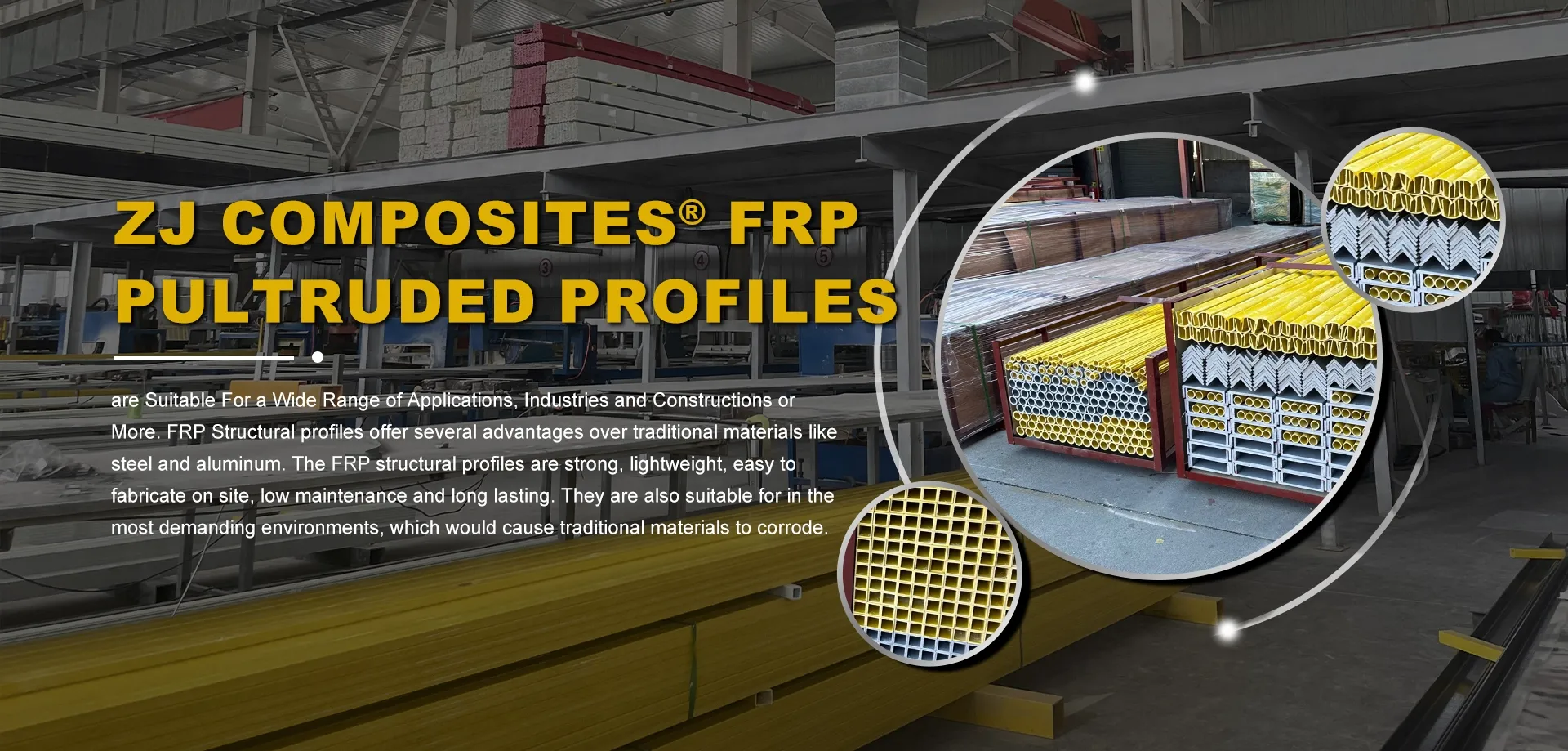loading...
- No. 9, Xingyuan South Street, Dongwaihuan Road, Zaoqiang County, Hengshui, Hebei, China
- admin@zjcomposites.com
- +86 15097380338
- Welcome to visit our website!
glass fiber reinforced polymer bars
Glass Fiber Reinforced Polymer Bars An Overview of Their Advantages and Applications
In recent years, the construction and engineering industries have witnessed a significant shift towards the use of advanced materials. One such innovation is Glass Fiber Reinforced Polymer (GFRP) bars, an alternative to traditional steel reinforcement in concrete structures. These bars offer a range of benefits that make them increasingly popular among engineers and architects.
What are GFRP Bars?
Glass Fiber Reinforced Polymer bars consist of a polymer matrix reinforced with glass fibers. The combination of these materials results in a lightweight, non-corrosive, and high-strength product. Unlike conventional steel rebar, GFRP bars offer unique properties that are advantageous in various applications. They are produced in various sizes and shapes, allowing for flexibility in design and construction.
Key Advantages of GFRP Bars
1. Corrosion Resistance One of the most significant advantages of GFRP bars is their resistance to corrosion. Unlike steel, which can corrode when exposed to moisture and chlorides, GFRP bars are inherently resistant to these environmental factors. This property extends the lifespan of structures and reduces maintenance costs, making them ideal for use in aggressive environments, such as coastal areas or industrial settings.
2. Lightweight GFRP bars are significantly lighter than steel rebar, weighing approximately one-fourth of their steel counterparts. This reduction in weight can lead to easier handling and transportation, lower labor costs during construction, and the potential for reduced foundation load requirements.
3. High Strength-to-Weight Ratio Despite their lightweight nature, GFRP bars possess a high strength-to-weight ratio. This means they can carry substantial loads while remaining lightweight, which is especially beneficial for reinforcing structures subject to dynamic loads, such as bridges and high-rise buildings.
4. Non-Magnetic and Non-Conductive GFRP bars are non-magnetic and non-conductive, making them suitable for applications where electromagnetic interference must be minimized, such as in certain electronic and communication installations. Their non-conductivity also makes them safer for use in environments where electrical hazards may be a concern.
5. Thermal Insulation GFRP bars possess excellent thermal insulation properties. This characteristic can help improve energy efficiency in buildings by reducing thermal bridging, ultimately contributing to lower heating and cooling costs.
glass fiber reinforced polymer bars

Applications of GFRP Bars
Due to their advantageous properties, GFRP bars are increasingly being used in a variety of applications
1. Bridge Construction The corrosion-resistant nature of GFRP makes it an excellent choice for bridge construction, particularly in regions where salt exposure is prevalent. GFRP bars help extend the lifespan of bridges and reduce the need for frequent maintenance.
2. Concrete Structures GFRP bars are used to reinforce concrete structures such as parking garages, water treatment plants, and marine structures. Their resistance to chemical attack and moisture makes them ideal for applications in harsh environments.
3. Retrofitting In retrofit projects, GFRP bars are utilized to strengthen existing concrete structures. Their lightweight nature allows for easy integration into older buildings without adding significant load.
4. Precast Concrete Elements GFRP bars are increasingly being used in precast concrete elements. Their lightweight and high strength allow for the design of thinner and lighter elements, leading to economical construction solutions.
5. Wind Turbine Blades GFRP is also extensively used in manufacturing wind turbine blades due to its high strength and light weight. The material contributes to improved energy efficiency and longer operational life for renewable energy structures.
Conclusion
Glass Fiber Reinforced Polymer bars represent a significant advancement in construction materials, offering numerous advantages over traditional steel reinforcement. Their corrosion resistance, lightweight nature, and versatility make them ideal for various applications in demanding environments. As the construction industry continues to evolve, GFRP bars are likely to play an increasingly prominent role in creating durable, efficient, and sustainable structures. Embracing these innovative materials not only enhances design flexibility but also contributes to the overall longevity and safety of infrastructure projects.
-
GRP Structures: The Future of Lightweight, High-Performance EngineeringNewsJun.20,2025
-
FRP Water Tank: High-Performance Storage for Corrosive and Clean Water SystemsNewsJun.20,2025
-
FRP Square Tube: The New Industry Standard for Chemical and Structural ApplicationsNewsJun.20,2025
-
FRP Pultruded Profiles: The Ultimate Choice for Lightweight Structural StrengthNewsJun.20,2025
-
FRP Handrails: The Safer, Smarter, and Stronger Choice for Modern InfrastructureNewsJun.20,2025
-
FRP Grating: The Smart Solution for Durable, Lightweight Industrial FlooringNewsJun.20,2025
-
Why Choose a Galvanized Water Tank for Your Storage NeedsNewsMay.21,2025
